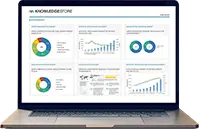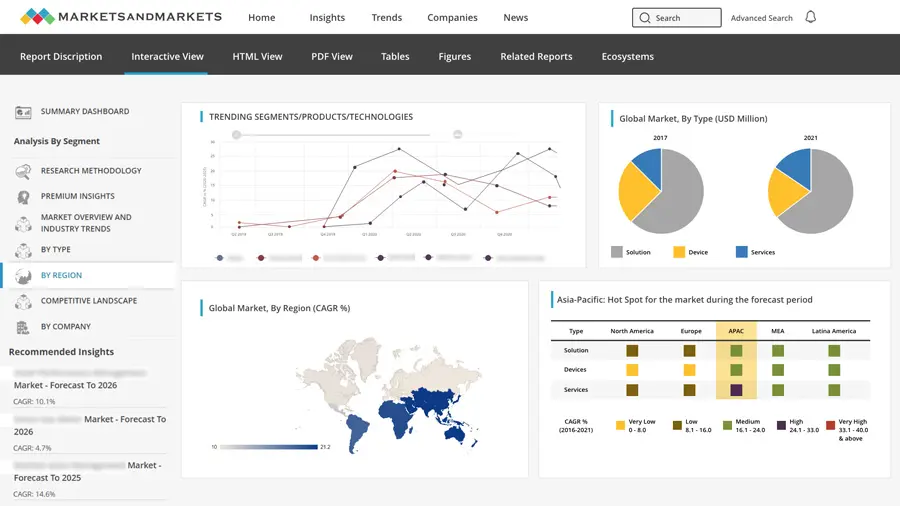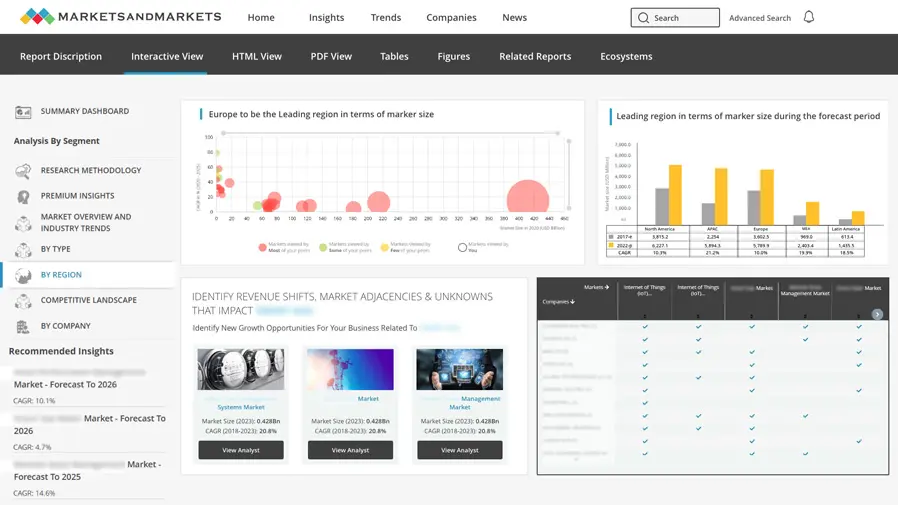Powergrid Telecom Market – Global Forecast To 2030
Powergrid Telecom Market
Power grid telecom refers to the communication infrastructure that allows the transfer of information between different components of the power grid. This infrastructure enables the monitoring, control, and optimization of power generation, transmission, and distribution. By transmitting data in real-time, these communication systems help operators make informed decisions, improving grid stability, enhancing safety, and enabling integration with renewable energy sources.
Impact of AI on Power Grid Telecom Market
AI is revolutionizing power grid telecommunication by enhancing grid reliability, optimizing energy distribution, and integrating renewable energy sources more efficiently. Through predictive maintenance, AI can foresee potential equipment failures, reducing downtime and costly outages. It improves load forecasting by analyzing vast amounts of real-time data, allowing for better energy management and dynamic power flow optimization. AI also supports smart grids by automating grid monitoring, fault detection, and response, ensuring faster recovery from disruptions. Moreover, AI strengthens cybersecurity by identifying and mitigating potential threats in real-time, ensuring the protection of critical infrastructure. Ultimately, AI enables smarter, more resilient power grids capable of meeting the growing energy demands of a sustainable future.
Improved Grid Reliability
Real-time communication between grid components allows operators to detect and respond to faults quickly, reducing downtime and preventing cascading failures that could lead to widespread blackouts. This ensures minimal downtime, improved resilience against outages, and optimized resource utilization, ultimately driving a more stable and reliable energy infrastructure.
Enhanced Operational Efficiency
Power grid telecom significantly enhances operational efficiency by enabling seamless communication across the power grid. Through advanced data transmission and real-time monitoring, it facilitates precise load balancing, quick fault identification, and automated system controls. This integration reduces manual interventions, streamlines energy distribution, and minimizes transmission losses, leading to a more cost-effective and efficient power grid operation.
Facilitation of Renewable Energy Integration
By providing real-time communication and data sharing, it ensures accurate forecasting, efficient load management, and seamless coordination between renewable energy sources and the grid. This capability helps balance the variability of renewables like solar and wind, enabling their smooth incorporation into the energy mix while maintaining grid stability and reliability.
Remote Monitoring and Control
Through advanced communication networks, utilities can remotely monitor grid components, detect faults, and optimize performance without physical intervention. This integration supports predictive maintenance, enhances grid resilience against outages, and facilitates the integration of renewable energy sources. Moreover, by leveraging telecom capabilities, utilities can implement demand response programs, smart metering, and decentralized energy management, fostering a smarter and more adaptive energy ecosystem.
Challenges in Power Grid Telecom Market
Despite the numerous advantages, there are challenges associated with the implementation and maintenance of power grid telecommunication systems. These include the high cost of installation, the complexity of integrating legacy infrastructure with new technologies, and the need for robust cybersecurity measures to prevent cyber threats.
The Future of Power Grid Telecommunication Systems
The future of power grid telecommunication is closely tied to the development of smart grids and the increasing adoption of renewable energy. As technology continues to evolve, telecommunication systems will become even more sophisticated, enabling better grid management, improving energy efficiency, and supporting the transition to a greener energy future.

TABLE OF CONTENTS
1.INTRODUCTION
2.RESEARCH METHODOLOGY
3.EXECUTIVE SUMMARY
4.PREMIUM INSIGHTS
5.MARKET OVERVIEW
5.1.Introduction
5.2.Market Dynamics
5.2.1.Drivers
5.2.2.Restraints
5.2.3.Opportunities
5.2.4.Challenges
5.3.Value Chain Analysis
5.4.Ecosystem Market Map
5.5.Pricing Analysis
5.6.Technology Analysis
5.7.Trends/Disruptions Impacting Customers’ Business
5.8.Regulatory Landscape
5.9.Porter’s Five Forces Analysis
5.10.Key Stakeholders & Buying Criteria
5.11.Case Study Analysis
5.12.Trade Analysis
5.13.Patent Analysis
5.14.Key Conferences & Events- 2024 & 2025
6.POWERGRID TELECOM MARKET, BY SOLUTION TYPE
6.1.Introduction
6.2.Devices
6.2.1.Routers
6.2.2.Modems
6.2.3.Gateways
6.2.4.Powerline Carrier Systems
6.2.5.Others
6.3.Software & Related Services
7.POWERGRID TELECOM MARKET, BY CONNECTIVITY
7.1.Introduction
7.2.Wi-Fi
7.3.Cellular Networks (Inclusive of LTE, and 5G)
7.4.LoRa
7.5.Others
8.POWERGRID TELECOM MARKET, BY PROCESS
8.1.Introduction
8.2.Generation
8.3.Transmission
8.4.Distribution
9.POWERGRID TELECOM MARKET, BY REGION
9.1.Introduction
9.2.North America
9.2.1.US
9.2.2.Canada
9.2.3.Mexico
9.3.Europe
9.3.1.UK
9.3.2.Germany
9.3.3.France
9.3.4.Italy
9.3.5.Spain
9.3.6.Rest of Europe
9.4.Asia Pacific
9.4.1.China
9.4.2.Japan
9.4.3.India
9.4.4.South Korea
9.4.5.Rest of Asia Pacific
9.5.Rest of the World
9.5.1.Middle East & Africa
9.5.1.1.GCC Countries
9.5.1.2.Rest of Middle East & Africa
9.5.2.South America
10.COMPETITIVE LANDSCAPE
10.1.Key Player Strategies/Right to Win
10.2.Revenue Analysis
10.3.Market Share Analysis
10.4.Company Valuation and Financial Metrics
10.5.Product/Brand Comparison
10.6.Company Evaluation Matrix: Key Players
10.6.1.Stars
10.6.2.Emerging Leaders
10.6.3.Pervasive Players
10.6.4.Participants
10.6.5.Company Footprint: Key Players
10.7.Company Evaluation Matrix: Startups/SMEs
10.7.1.Progressive Companies
10.7.2.Responsive Companies
10.7.3.Dynamic Companies
10.7.4.Starting Blocks
10.7.5.Competitive Benchmarking: Startups/SMEs
10.7.5.1.Detailed List of Key Startups/SMEs
10.7.5.2.Competitive Benchmarking of Key Startups/SMEs
10.8.Competitive Situation and Trends
11.COMPANY PROFILES
11.1.Introduction
11.2.Key Players
11.2.1. Telefonaktiebolaget LM Ericsson
11.2.2. Nokia
11.2.3.Huawei Technologies Co., Ltd.
11.2.4.Commtel Networks
11.2.5.Semtech Corporation
11.2.6.TELTONIKA
11.2.7.Siemens
11.2.8.Hitachi Energy Ltd.
11.2.9.General Electric Company
11.2.10.Cisco Systems, Inc.
11.3.Other Players
12.APPENDIX















Growth opportunities and latent adjacency in Powergrid Telecom Market